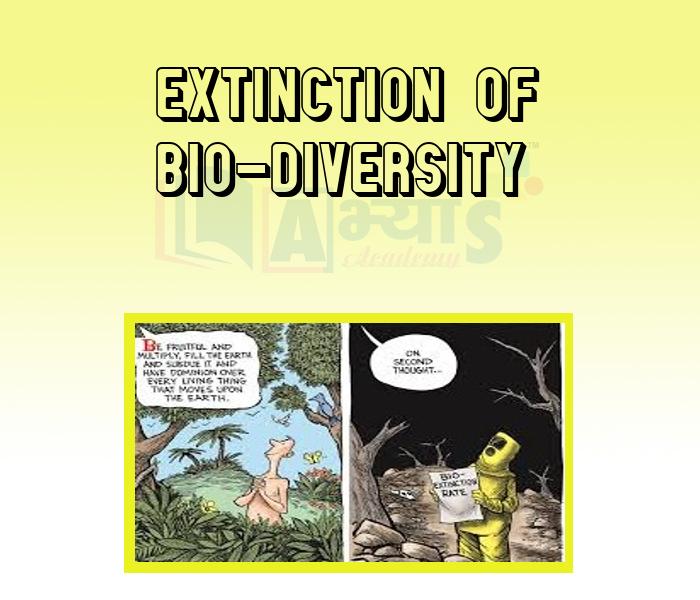Extinction Of Bio-Diversity











Extinction Of Bio-Diversity
Extinction:
In biology and ecology, extinction refers to the permanent end of an organism or of a group of organisms, normally a species. It is generally considered as the death of the last individual of the group (although the capacity to breed and recover may have been lost before this point). Because a species' potential range may be very large, determining this moment is difficult, and is usually done retrospectively.
During evolution, new species arise through the process of speciation - where new varieties of organisms arise and thrive when they are able to find and exploit an ecological niche-and species become extinct when they are no longer able to survive in changing conditions or against superior competition. A typical species becomes extinct within 10 million years of its first appearance, although some species, called living fossils, survive virtually unchanged for hundreds of millions of years. Most extinction occurs naturally, without human intervention; it is estimated that 99.9% of all species that have ever existed are now extinct.
Which of the following are human benefits of biodiversity ? | |||
| Right Option : D | |||
| View Explanation | |||
On which day International Day of biodiversity is observed ? | |||
| Right Option : C | |||
| View Explanation | |||
Mass extinction is defined as the __________
| |||
| Right Option : C | |||
| View Explanation |
Students / Parents Reviews [10]
It was a good experience with Abhyas Academy. I even faced problems in starting but slowly and steadily overcomed. Especially reasoning classes helped me a lot.

Cheshta
10thAbhyas is a complete education Institute. Here extreme care is taken by teacher with the help of regular exam. Extra classes also conducted by the institute, if the student is weak.

Om Umang
10thMy experience was very good with Abhyas academy. I am studying here from 6th class and I am satisfied by its results in my life. I improved a lot here ahead of school syllabus.

Ayan Ghosh
8thMy experience with Abhyas academy is very good. I did not think that my every subject coming here will be so strong. The main thing is that the online tests had made me learn here more things.

Hiya Gupta
8thI have spent a wonderful time in Abhyas academy. It has made my reasoning more apt, English more stronger and Maths an interesting subject for me. It has given me a habbit of self studying

Yatharthi Sharma
10thAbout Abhyas metholodology the teachers are very nice and hardworking toward students.The Centre Head Mrs Anu Sethi is also a brilliant teacher.Abhyas has taught me how to overcome problems and has always taken my doubts and suppoeted me.

Shreya Shrivastava
8thMy experience with Abhyas is very good. I have learnt many things here like vedic maths and reasoning also. Teachers here first take our doubts and then there are assignments to verify our weak points.

Shivam Rana
7thIt has a great methodology. Students here can get analysis to their test quickly.We can learn easily through PPTs and the testing methods are good. We know that where we have to practice

Barkha Arora
10thAbhyas Methodology is very good. It is based on according to student and each child manages accordingly to its properly. Methodology has improved the abilities of students to shine them in future.

Manish Kumar
10thA marvelous experience with Abhyas. I am glad to share that my ward has achieved more than enough at the Ambala ABHYAS centre. Years have passed on and more and more he has gained. May the centre flourish and develop day by day by the grace of God.
